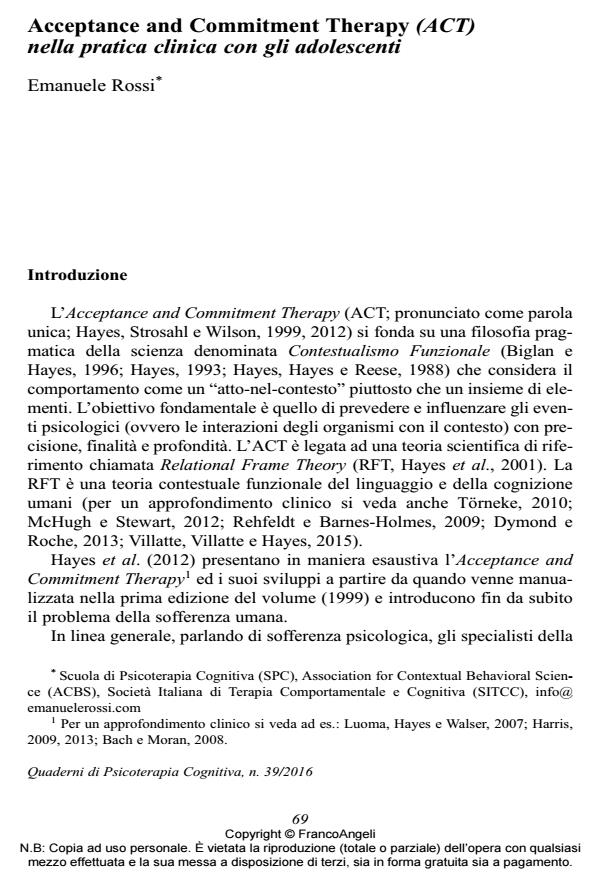Acceptance and Commitment Therapy (ACT) in Clinical Practice with Adolescents
Journal title QUADERNI DI PSICOTERAPIA COGNITIVA
Author/s Emanuele Rossi
Publishing Year 2016 Issue 2016/39
Language Italian Pages 14 P. 69-82 File size 108 KB
DOI 10.3280/QPC2016-039005
DOI is like a bar code for intellectual property: to have more infomation
click here
Below, you can see the article first page
If you want to buy this article in PDF format, you can do it, following the instructions to buy download credits

FrancoAngeli is member of Publishers International Linking Association, Inc (PILA), a not-for-profit association which run the CrossRef service enabling links to and from online scholarly content.
In recent years, there has been an increasing development of ACT research, manuals and protocols for adolescents. They were born from the need to consider the young clients in specific contexts that are different from adulthood and to recognize the importance of structured protocols tailored to the clinic with adolescents. In this paper the two most recent manuals for ACT clinical practice with adolescents will be presented: ACT for Adolescents (Turrell e Bell, 2016) and The thriving adolescent (Hayes e Ciarocchi, 2015). These two clinical manuals are currently two of the most comprehensive ACT resources for adolescents. They may be used to build a profound and significant clinical practice and to generate in young clients greater psychological flexibility, mindful awareness of the present moment, willingness and acceptance to their feelings, meaningful life directions and consistency with their values.
Keywords: Acceptance and Commitment Therapy, adolescents, psychological flexibility
Emanuele Rossi, Acceptance and Commitment Therapy (ACT) nella pratica clinica con gli adolescenti in "QUADERNI DI PSICOTERAPIA COGNITIVA" 39/2016, pp 69-82, DOI: 10.3280/QPC2016-039005